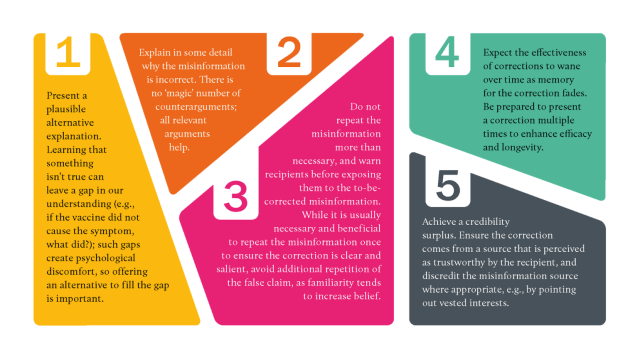Disinformation
Academic Publications
ISIS Propaganda: A Full-Spectrum Extremist Message
This book offers a comprehensive overview and analysis of the Islamic State's use of propaganda.
Combining a range of different theoretical perspectives from across the social sciences, and using rigorous methods, the authors trace the origins of the Islamic State's message, laying bare the strategic logic guiding its evolution, examining each of its multi-media components, and showing how these elements work together to radicalize audiences' worldviews.
This volume highlights the challenges that this sort of "full-spectrum propaganda" raises for counter terrorism forces. It is not only a one-stop resource for any analyst of IS and Salafi-jihadism, but also a rich contribution to the study of text and visual propaganda, radicalization and political violence, and international security.
(From the book abstract)
Stephane J. Baele, Katharine A. Boyd, and Travis G. Coan. 2020. ‘ISIS Propaganda: A Full-Spectrum Extremist Message’. Oxford, New York: Oxford University Press. ISBN: 9780190932459
Techniques of disinformation: Constructing and communicating “soft facts” after terrorism
Informed by social media data collected following four terror attacks in the UK in 2017, this article delineates a series of “techniques of disinformation” used by different actors to try and influence how the events were publicly defined and understood.
By studying the causes and consequences of misleading information following terror attacks, the article contributes empirically to the neglected topic of social reactions to terrorism. It also advances scholarship on the workings of disinforming communications, by focusing on a domain other than political elections, which has been the empirical focus for most studies of disinformation to date.
Theoretically, the analysis is framed by drawing an analogy with Gresham Sykes and David Matza’s (1957) account of the role of “techniques of neutralization” originally published in the American Sociological Review. The connection being that where they studied deviant behaviour, a similar analytic lens can usefully be applied to disinformation cast as “deviant” information.
(From the journal abstract)
Martin Innes, 2019. Techniques of disinformation: Constructing and communicating “soft facts” after terrorism. British Journal of Sociology. https ://doi.org/10.1111/1468-4446.12735
The Psychology of Conspiracy Theories
What psychological factors drive the popularity of conspiracy theories, which explain important events as secret plots by powerful and malevolent groups? What are the psychological consequences of adopting these theories? We review the current research and find that it answers the first of these questions more thoroughly than the second. Belief in conspiracy theories appears to be driven by motives that can be characterized as epistemic (understanding one’s environment), existential (being safe and in control of one’s environment), and social (maintaining a positive image of the self and the social group). However, little research has investigated the consequences of conspiracy belief, and to date, this research does not indicate that conspiracy belief fulfills people’s motivations. Instead, for many people, conspiracy belief may be more appealing than satisfying. Further research is needed to determine for whom, and under what conditions, conspiracy theories may satisfy key psychological motives.
(From the journal abstract)
Karen Douglas, Robbie M. Sutton, and Aleksandra Cichocka. 2017. ‘The Psychology of Conspiracy Theories’. Current Directions in Psychological Science, 26 (6): 538–42. https://doi.org/10.1177/0963721417718261.
Understanding Conspiracy Theories
Scholarly efforts to understand conspiracy theories have grown significantly in recent years, and there is now a broad and interdisciplinary literature. In reviewing this body of work, we ask three specific questions. First, what factors are associated with conspiracy beliefs? Our review of the literature shows that conspiracy beliefs result from a range of psychological, political, and social factors. Next, how are conspiracy theories communicated? Here, we explain how conspiracy theories are shared among individuals and spread through traditional and social media platforms. Next, what are the societal risks and rewards associated with conspiracy theories? By focusing on politics and science, we argue that conspiracy theories do more harm than good. We conclude by suggesting several promising avenues for future research.
(From the journal abstract)
Karen Douglas, Joseph E. Uscinski, Robbie M. Sutton, Aleksandra Cichocka, Turkay Nefes, Chee Siang Ang, and Farzin Deravi. 2019. ‘Understanding Conspiracy Theories’. Political Psychology, 40 (S1): 3–35. https://doi.org/10.1111/pops.12568.
‘It’s not paranoia when they are really out to get you’: the role of conspiracy theories in the context of heightened security
Conspiracy theories have been seen as important supporting components in extreme political beliefs. This paper considers conspiracy theories in the counter jihad movement, an international network combining cultural nationalism with xenophobia towards Muslims.
This paper evaluates the nature of conspiracy belief through the analysis of several key texts published by counter jihad activists, and of content published on a daily basis by three core websites. The findings show the Islamisation conspiracy theory to be highly modular, with authors able to mix and match villains.
The analysis of daily published content demonstrates that, at the routine level, conspiracy theory is rarely used openly as a call to action.
This is in keeping with other examples of conspiracy theory in extreme right wing movements in which conspiracy is seen as justification for existing prejudices. However, the political and security context the counter jihad operates in also affords the movement opportunities to support some of their claims, often by reproducing or reinterpreting mainstream or quasi-mainstream reporting, without reverting openly to conspiracy tropes.
In the case of the counter jihad movement, as well as potentially other far-right movements, conspiracy theory may be taking a back seat to a more sophisticated public relations approach.
(From the journal abstract)
Lee, Benjamin J. 2017. ‘It’s Not Paranoia When They Are Really out to Get You: The Role of Conspiracy Theories in the Context of Heightened Security’. Behavioral Sciences of Terrorism and Political Aggression 9 (1): 4–20. https://doi.org/10.1080/19434472.2016.1236143.

























